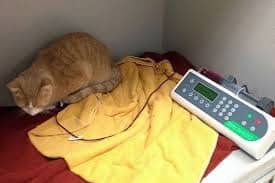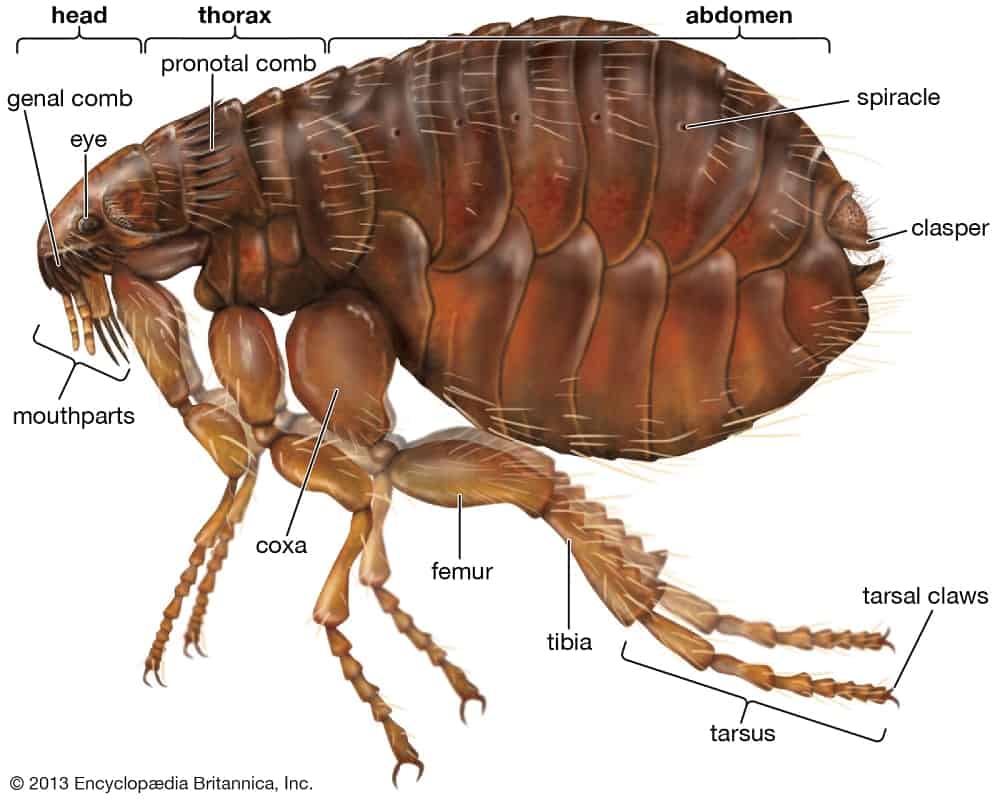
Fleas aren’t just a nuisance. They drink blood and blood loss can kill. With many flea infestations, pet owners have no idea that flea infestation could be lethal.
We all know that fleas can make pets itch. Some of us are all too familiar with the spectacular skin inflammation in a flea-bite allergic pet but we often forget that fleas drink blood and that lots of fleas = lots of blood loss. The physical state of inadequate red blood cells is called anemia and when it is severe enough, it is a life-threatening condition.
Pets will not itch from their fleas unless they are allergic to flea bites. No scratching does not mean no fleas.
It is easy to under-estimate a pet’s infestation. Only animals allergic to flea bites will itch from their fleas. This means that the animal who is not allergic to flea bites will not be scratching or losing hair, thus the owner may not realize that the pet has a heavy infestation. If the pet is effective at licking and self-grooming, it may be hard to see the fleas, especially if the owner does not have a flea comb. Do not rely on your own ability to see the fleas; use reliable flea control regardless of what you see or do not see.
Check for Flea Dirt
The black, pepper-like specks found in an infested pet’s coat are actually bits of blood that have been sucked up by the flea and excreted in neat little packages to feed the larval fleas that hatch in the environment. Even if live fleas are not seen, flea dirt means that live fleas are there.
What pets are likely to die from heavy flea infestations?

Very young kittens being raised outdoors or by a mother cat who goes outdoors. Young kittens are small and do not have blood to spare. Furthermore, they are growing and trying to expand their blood volume; they are too young to effectively groom themselves and remove their own fleas.
Flea anemia is probably the number one cause of death in open-household kittens.It takes a lot of fleas to produce enough blood loss to create a life-threatening situation for the host pet but it still happens commonly. The following situations are high-risk for flea anemia.
- Elderly cats who go outdoors. The elderly cat is often debilitated from other metabolic problems. Grooming is less efficient, besides which an older cat is just not strong enough to withstand much blood loss.
- Outdoor puppies. Their situation is similar to that of the kittens’: too small to effectively groom and trying to grow in the face of on going blood loss.
- Sometimes even an older dog or cat that’s homeless, weakened and malnourished can succumb to months of heavy flea and other parasitic infestations
Eventually, the weakness catches up with these animals and they will die unless they receive a blood transfusion.
Evaluation and Treatment
The good news is that these patients can still be treated even fairly late in the course of the disease. Often they will need blood transfusions or transfusion with blood substitutes. They also need to have the fleas removed and then returned to an environment where they will be protected from further infestation.
The first step is recognizing the problem. This is not difficult for a trained veterinary health care worker but it may not be easy for an uninformed pet owner. The affected animal will have pale gums (normal gums are shell-pink; anemic gums can be completely white). In advanced disease, the patient will be listless and even cold. A flea comb can be used to check for flea dirt. Pets sometimes eat small pebbles, dirt, or cat litter when they are anemic in an effort to obtain more iron.
- Be familiar with the normal color of your pet’s gums so that you can recognize a problem.
- Regular flea combing can help nip a big problem in the bud.
- Use flea control products all year round so you don’t get caught with a surprise heavy flea burden in the spring.
A test called a hematocrit (HCT) or packed cell volume (PCV) is easily done in your vet’s office to assess the degree of anemia. The hematocrit or PCV reflects the percentage of red blood cells that should be in a sample of blood. In dogs the normal range is 38 to 57; for cats, 24 to 45. Blood transfusion are considered when values reach 20 or less.
Ridding the critically ill patient of fleas can be problematic. Often the patient is too sick to tolerate the stress of a bath and is too young or too small for flea control products. In this situation, veterinarians have to use their judgment on what is the safest route to removing the fleas. It is worth mentioning nitenpyram (brand name Capstar®) at this point as this simple product has greatly enhanced our ability to clear fleas from a patient quickly and safely.
Nitenpyram is available as a fast-acting flea-killing tablet with no known side effects for mammals. It is labeled for use in animals weighing 2 lbs or more and begins killing fleas within 20 minutes of oral administration. While it does not have long-acting flea protection, its ability to rapidly remove a lethal flea burden has made it especially popular for use on patients with dangerous flea infestations.
Returning Home
Of course after all the blood transfusions, heat support, and de-fleaing, the pet will ultimately go home, potentially to the same environment where the infestation occurred in the first place. Usually, topical flea control products will provide adequate future protection and the use of a vitamin and iron supplement will help the patient rebuild red blood cell reserves. The most important prevention is the owner’s education.
There is no Reason for a Pet to Carry a Flea Burden in this Day and Age
There are still common misconceptions among pet owners:
- People commonly believe they have a flea bite sensitivity and if they themselves do not perceive fleas biting, then there cannot be a significant flea burden. Fleas actually only bite people when they are newly emerged from their cocoons and are hunting for their permanent host. Waiting for a person to perceive a flea bite requires the flea population to have successfully established in the environment (i.e. the house) and progressed all the way to production of new adult fleas. In reality, when the fleas are biting people, a significant population has been present for weeks or longer.
- Many people believe that a pet with fleas with scratch or be itchy. In reality, only the pets allergic to fleas will be itchy.
- It is also commonly believed that fleas are simply part of pet ownership and that there is no way to avoid them. This may have been true at one time but, in reality, fleas have been optional for decades with flea control methods achieving higher levels of convenience and safety each year.
The days of sprays, powders, and foggers are largely gone, supplanted by chewable tablets and spot-on preparations. No pet needs to have fleas in the 21st century and new products are being released every year.
Compare flea preventive products to help you decide which product is best for your situation. If you need help selecting flea control products, remember that your veterinarian and staff are professionally educated in this subject and will be happy to assist you.


